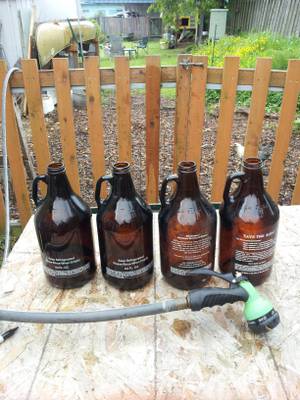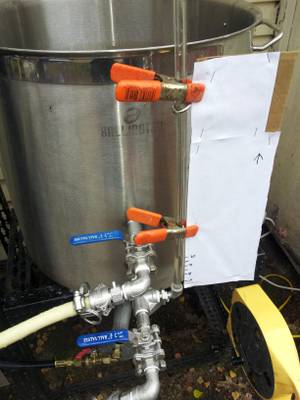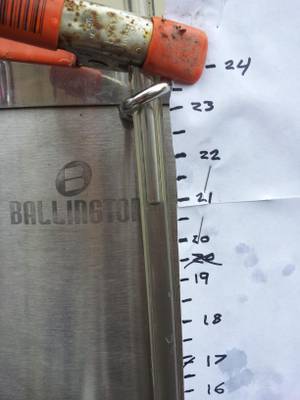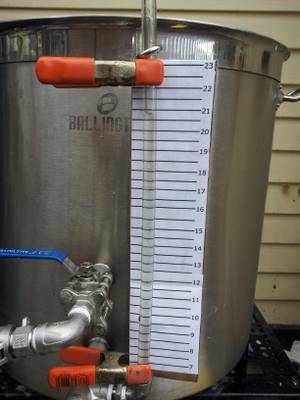Calibrating Sir Ballington
Today I finally got around to calibrating the boil kettle on Sir Ballington. I have had the sight tube installed for a long time now but I never took the time to calibrate it. It was shipped with convenient stickers to use as markings. Unfortunately I let them sit out in my brew hut which isn't really doing a great job of protecting my equipment from the elements, so the stickers are ruined. I got around this by making my own marking system. Check out the pics below to see my method.
Appropriate measuring devices.
I decided to use growlers as the measuring device to fill the kettle. I had been putting this off for a long time because I couldn't think of a good way to measure out the water for calibration. In the end I decided that I didn't need anything super accurate (this was my big hangup) and that I just needed to get it done. I was thinking about it while filling and decided that with my size of vessel and amount of error wouldn't make a big difference (say 1 oz extra for 48 half gallon fills is only 1.5% error.
Calibrating the boil kettle on Sir Ballington.
I made a calibration device using cardboard, printer paper, and a sharpie. I thought that I'd need to put in at least 1 gal for every mark on the kettle to see any change in the sight tube. I was totally wrong about that. Every half gallon increment made a decent change in the level of the sight tube. Starting after 8 gallons I made a mark for every growler dumped in the pot.
This is what a good meniscus looks like.
While I was filling I think I may have made some inaccurate marks around the 17 gallon mark. The tube was dry and the meniscus compressed. I manually siphoned (instant regret btw) the water up the tube and when it settled it formed a perfect meniscus. You can see the difference where I crossed out the initial mark.
Finished Sir Ballington boil kettle calibration.
Next I scanned my hand written marks into GIMP (free Photoshop clone). I replaced my handwriting with perfect horizontal lines and numbers. Printed it out in the same scale (after much trial and error) and glued it to another piece of cardboard. I also covered it in packing tape to make it weather resistant. Even if this gets ruined by the weather I can always print it out again and make a new one.
I want to do some testing of the calibration and possibly remake the whole thing depending on the results. I'll definitely cut it down so it's not as wide. I'd also like to find a method to attach it to the sight tube without occluding the tube. I could use more packing tape but that's not ideal.